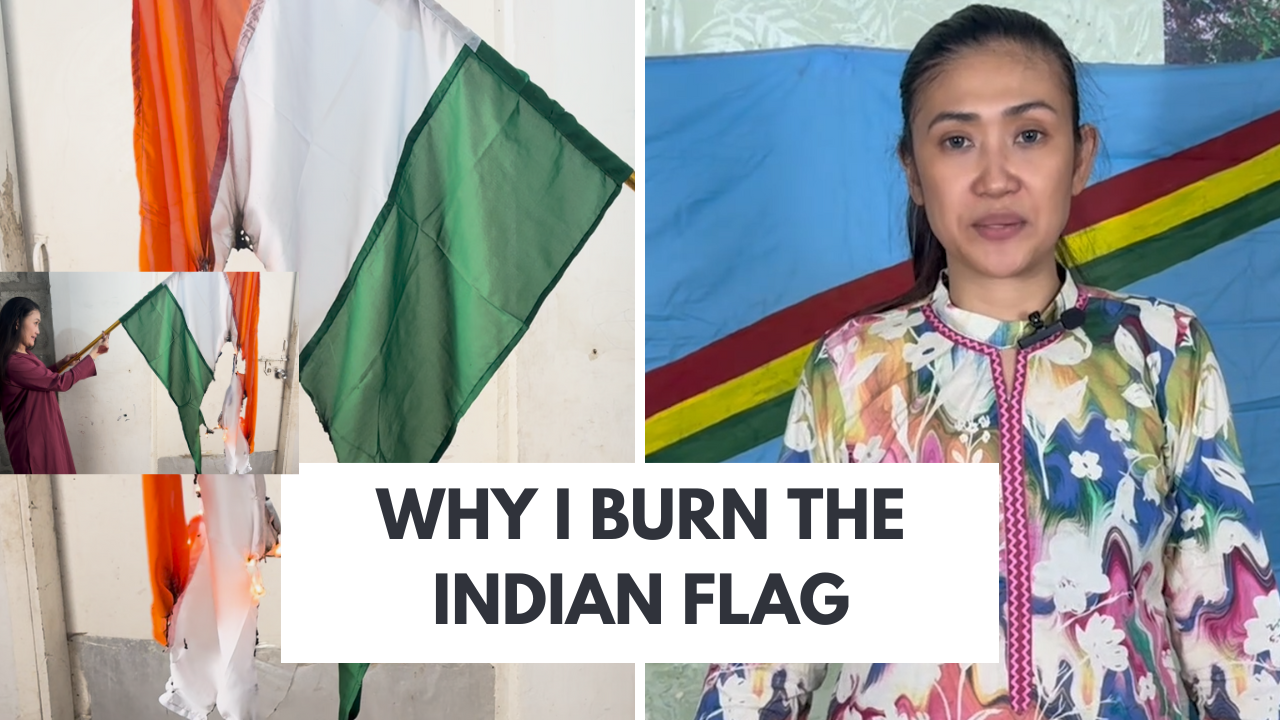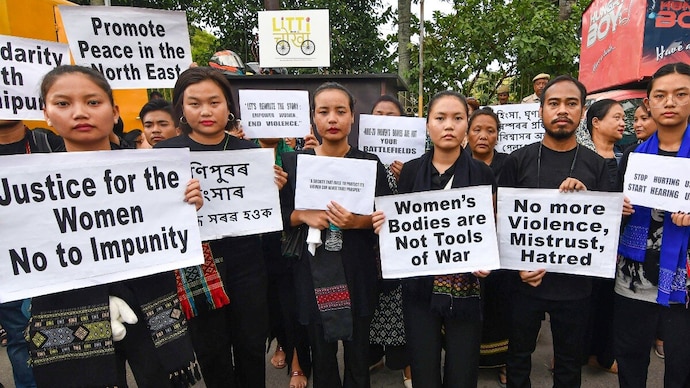
A dramatic video emerged on social media this week—a young Naga woman, dressed in traditional attire, standing firm as she sets the Indian tricolour on fire. The woman in the video identifies herself as Sophia Naga, a self-proclaimed activist affiliated with the National Socialist Council of Nagalim (NSCN). Her act of burning the Indian flag, while shocking to many, has drawn attention to the long-standing Naga political question—a conflict that continues to simmer beneath India’s national narrative.
Although Sophia is not a widely known figure, her actions coincide with a referendum campaign launched by members of the Naga diaspora, aiming to revive international discussion around the unresolved status of Nagaland and the alleged forced integration into the Indian Union.
A Forgotten Referendum, A Silenced Nation
A dramatic video emerged on social media this week—a young Naga woman, dressed in traditional attire, standing firm as she sets the Indian tricolour on fire. The woman in the video identifies herself as Sophia Naga, a self-proclaimed activist affiliated with the National Socialist Council of Nagalim (NSCN). Her act of burning the Indian flag, while shocking to many, has drawn attention to the long-standing Naga political question—a conflict that continues to simmer beneath India’s national narrative.
Although Sophia is not a widely known figure, her actions coincide with a referendum campaign launched by members of the Naga diaspora, aiming to revive international discussion around the unresolved status of Nagaland and the alleged forced integration into the Indian Union.
What Is the Nagaland Issue?
To understand the rage, one must first understand the roots of Naga resistance.
Before 1947, the idea of India as a unified nation-state did not exist. India was a geographical region, not a political entity. The Nagas were not part of this imagined union. They were an independent people with distinct language, customs, and governance systems.
Under British rule, Naga Hills and Tuensang areas were treated as “Excluded Areas”—regions that even the British colonial government acknowledged were not naturally integrated into British India. In 1935, the Government of India Act reinforced this, placing large parts of Nagaland outside the administrative control of the Indian legislature.
When the British announced their departure from the subcontinent, the Naga leadership formally informed them that Nagaland did not wish to join the Indian Union. On 14 August 1947, a day before India’s own independence, the Nagas declared themselves free. This act was ignored by India’s Interim Government.
By 1951, the NNC conducted a plebiscite to reaffirm that declaration. The Indian state responded not with negotiation—but with military invasion.
Forced Annexation and the Militarisation of Nagaland
Following the plebiscite, the Indian Army was deployed into the Naga Hills. Entire villages were burned, women were raped, and thousands were killed. The Armed Forces (Special Powers) Act (AFSPA), imposed in 1958, gave Indian soldiers unchecked power to kill, arrest, and torture civilians without fear of prosecution.
This led to decades of armed conflict. While peace talks have occurred—most notably the 1997 ceasefire between the Indian government and the NSCN (IM)—Nagaland continues to be one of the most militarised zones in the world.
Human Rights Abuses: The Indian Army’s Legacy in Nagaland

Decades of militarisation have left deep wounds in the Naga psyche. Reports by international watchdogs like Amnesty International and Human Rights Watch have repeatedly condemned the Indian state’s approach to the northeast. Common grievances include:
- Extrajudicial killings: Over 1,500 cases documented in Northeast India from 2000–2020 (ACHR)
- Widespread sexual violence: Notably in Oinam village, 1987, where women were raped and humiliated—no soldier was ever punished
- Mass displacement: Entire communities were uprooted and driven into the jungles during army operations in the 1950s–70s
Despite numerous reports from Amnesty International, Human Rights Watch, and even India’s own fact-finding commissions, justice remains elusive.
Why the Hate? Why the Fire?
“They forced our land into their map. They call our resistance ‘terrorism’. But how long can we live without dignity?” Sophia asks.
In a chilling tweet, she revealed: “They are looking for me in Dimapur, Phek, and even near Mon—sending men in plain clothes, asking for ‘the girl who burned the flag’. I’ve received threats. Calls from unknown numbers telling me I’ll be ‘silenced forever’. If anything happens to me, I hold the Indian government fully responsible.”
She is now in hiding.
But her act has lit a spark. From diaspora communities in Europe and the US, to underground circles in Kohima and Mokokchung, Sophia is not seen as a criminal—but a symbol.
A symbol of what it means to say: Nagaland is not India.
Conclusion: A Fire That Cannot Be Silenced
The Indian state has long tried to present Nagaland’s struggle as an internal matter, a fringe rebellion. But Sophia Naga’s bold defiance has pulled back the curtain.
This isn’t just about a flag. It’s about history, identity, and survival.
And if a flag must burn to awaken the world—then perhaps, it was long overdue.
